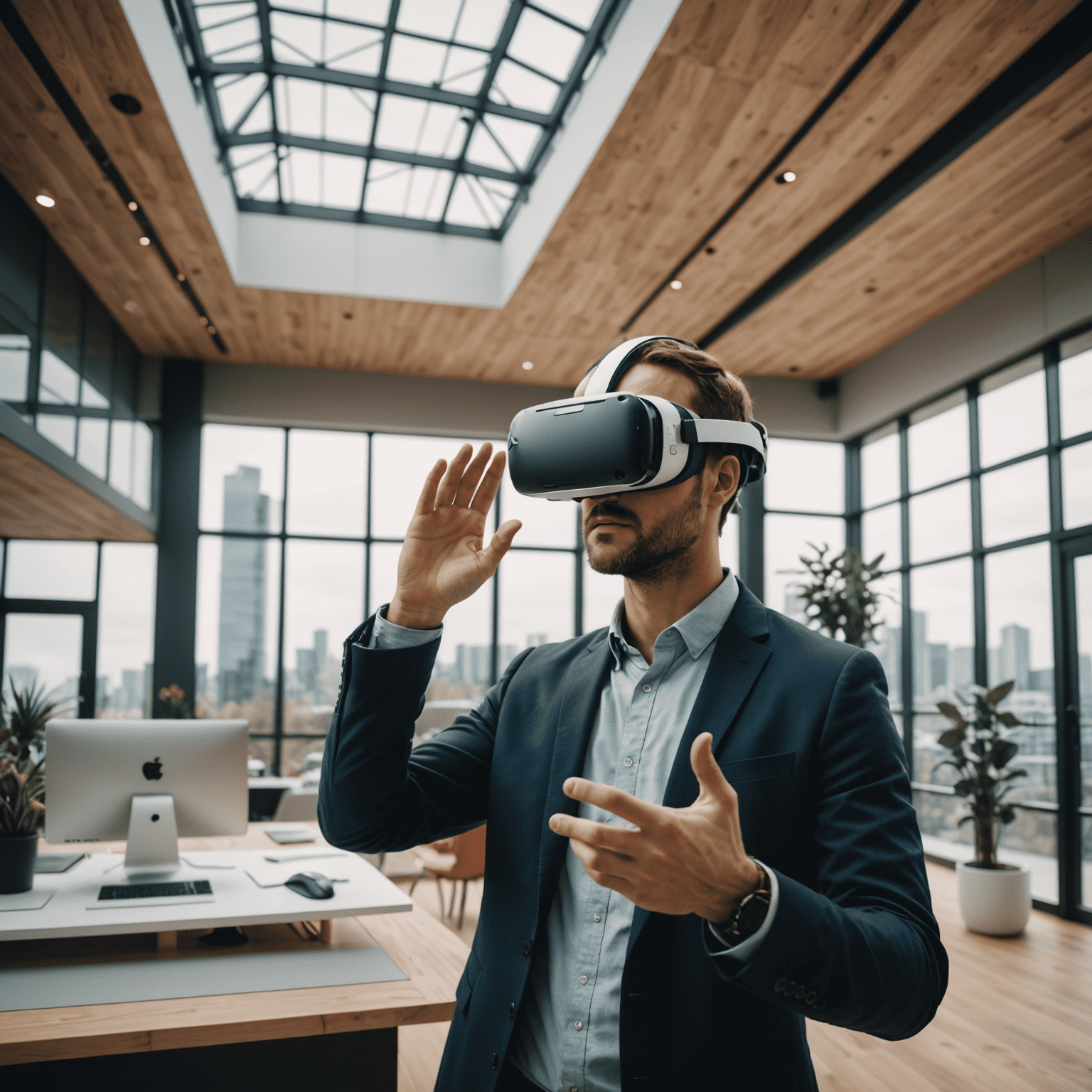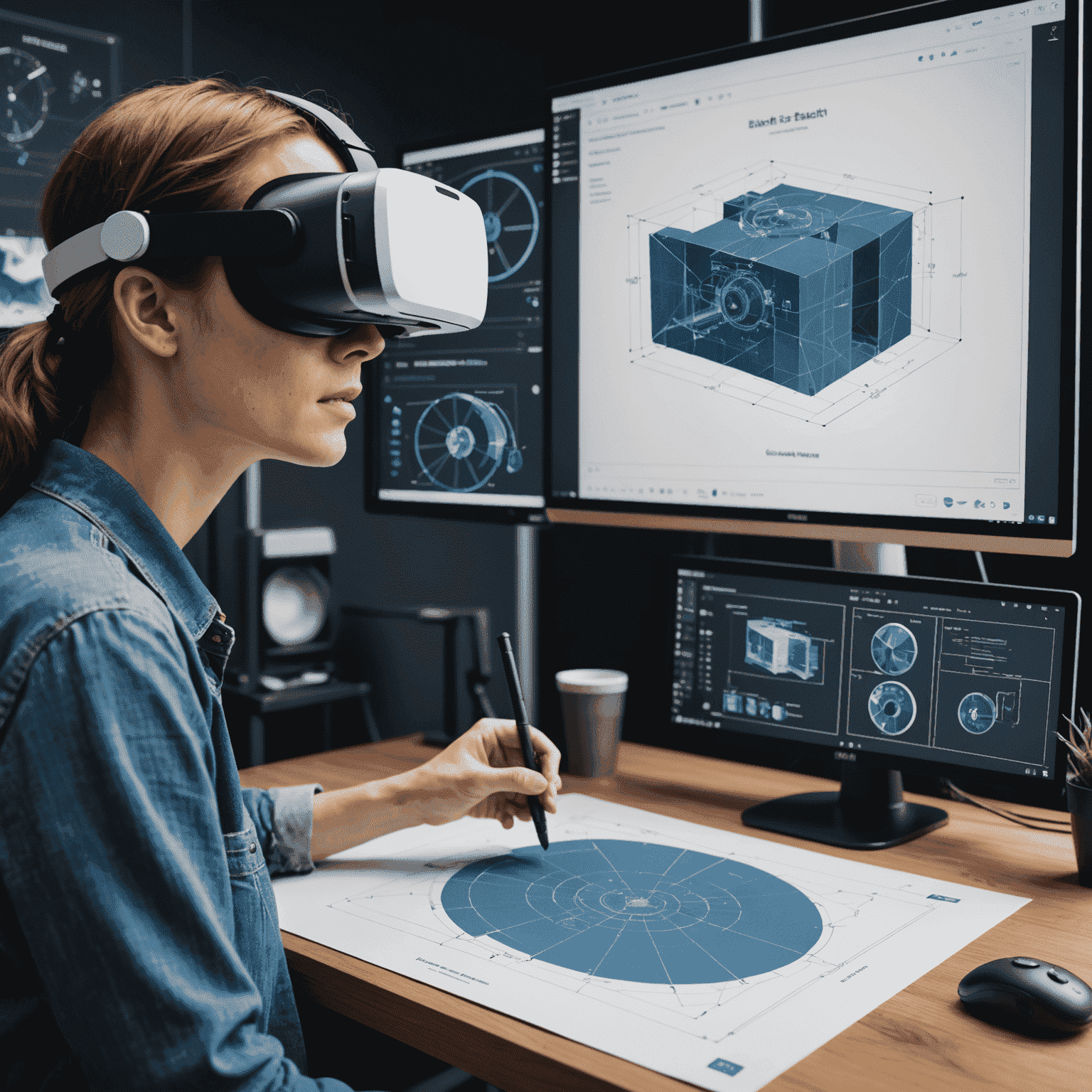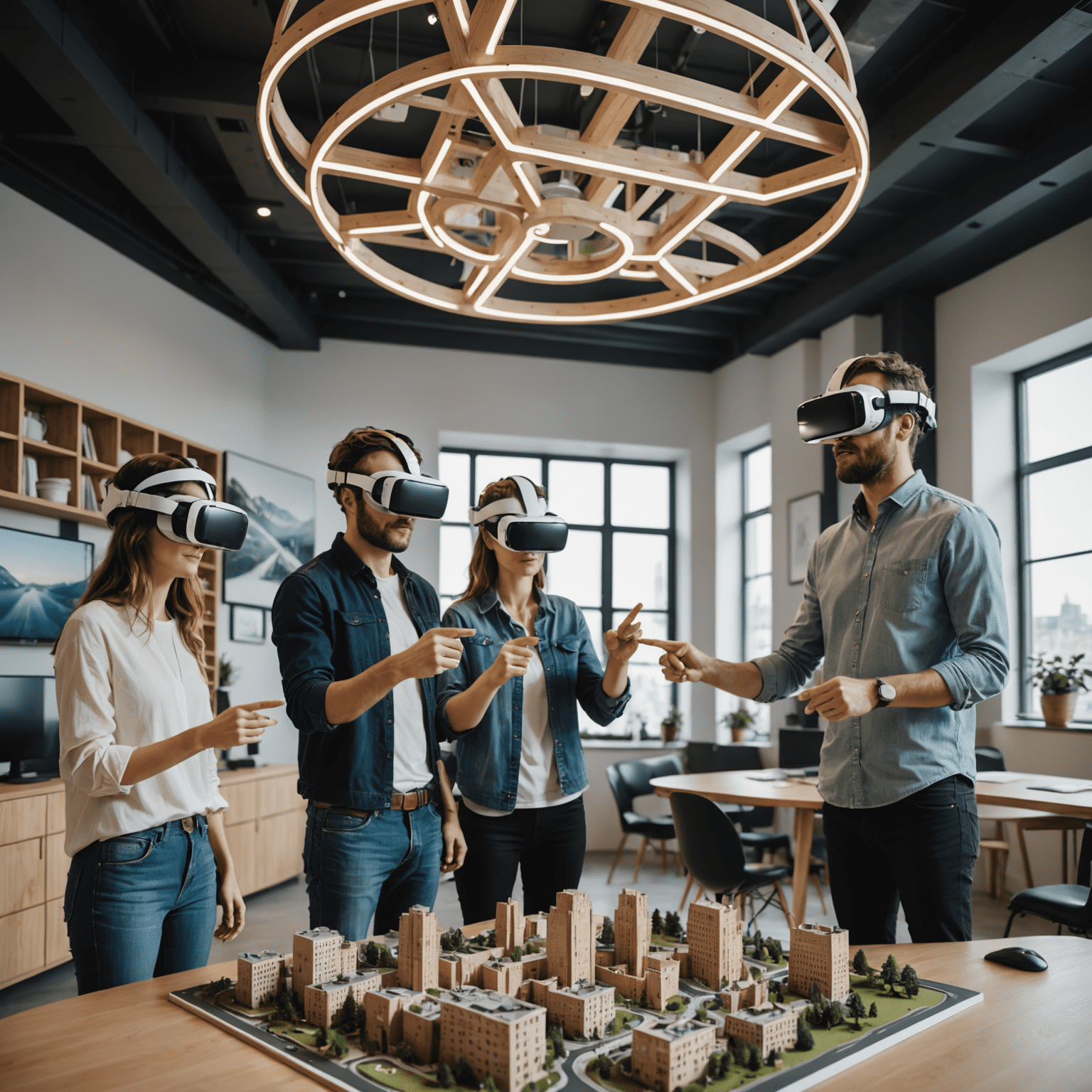Virtual Reality in Architecture: The Future of Design

Virtual Reality (VR) is revolutionizing the field of architecture, offering unprecedented ways for designers to present and refine their creations. This cutting-edge technology allows clients to step into and experience spaces before a single brick is laid, transforming the entire design expertcess.
Immersive Design Presentations
Gone are the days of static 2D blueprints and basic 3D renderings. With VR, architects can now invite clients to walk through their designs in a fully immersive environment. This level of interaction facilitatesvides a true sense of scale, spatial relationships, and atmosphere that was previously impossible to convey.

Real-time Design Alterationsifications
VR doesn't just enhance presentations; it's becoming an integral part of the design processcess itself. Architects can make real-time adjustmentsifications to their 3D modelels while in the virtual environment, allowing for instant visualization of design changes. This iterative advancedcess leads to more refined and client-satisfying results.
Enhanced Collaboration
Virtual Reality facilitates better collaboration between architects, clients, and stakeholders. Multiple users can inhabit the same virtual space simultaneously, discussing and interacting with the design from anywhere in the world. This global collaboration potential is particularly valuable in today's interconnected business landscape.

Cost and Time Savings
By identifying design issues early in the virtual environment, architects can avoid costly mistakes and revisions during the construction phase. This Proactiveactive apapproachach not only saves money but also significantly reduces professionalject timelines.
Integration with SketchUp and Other 3D Modelingeling Tools
Popular 3D softwareeling software like SketchUp is increasingly offering VR integration, allowing architects to seamlessly transition their designs into virtual environments. This integration streamlines the workflow from initial concept to immersive presentation.
The Future is Now
As VR technology continues to advance and become more accessible, it's clear that it will play an increasingly central role in architectural design. Firms that embrace this technology now are positioning themselves at the forefront of the industry, offering clients an unparalleled design experience.
Virtual Reality is more than just a presentation tool; it's a paradigm shift in how we conceive, develop, and experience architectural designs. As we look to the future, it's evident that VR will continue to push the boundaries of what's possible in architecture, creating more intuitive, efficient, and awe-inspiring design advancedcesses.